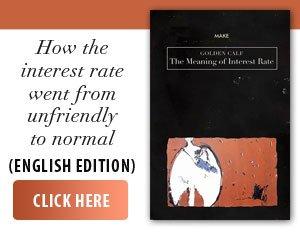The tariffs imposed by the Donald Trump administration are affecting all of America's major trading partners. But when it comes to trade with the US, what matters is not just the tariffs a country faces, but how it compares to its competitors.
A visualcapitalist.com analysis, conducted in conjunction with the Hinrich Foundation, shows which countries stand to lose the most and the least from Trump's tariffs. The data presented in the study comes from Global Trade Alert and is calculated by comparing a jurisdiction's trade-weighted tariff rate to the average rate its competitors face for the exact same products.
• Tariffs for America's Top 20 Importing Countries
When Trump took office in January 2025, he quickly imposed major tariffs on America's major trading partners. However, the rates varied widely by country. China and India were hit hardest, with trade-weighted tariffs rising to 47.3% and 38%, respectively, in September 2025. Brazil (29.6%) and Switzerland (19.3%) also faced high tariffs.
In contrast, Ireland (6.6%) and the United Kingdom (7.1%) imposed much milder tariffs, while Canada (19.4%) and Germany (18.8%) fell in the middle.
• Relative "tariff advantage” for some countries
Global Trade Alert compared competitors' tariffs to rank countries that have gained or lost ground under Trump. The final result is an estimate of relative tariff advantages (positive numbers) and disadvantages (negative numbers). China, India, and Brazil faced the largest tariff increases, giving their rivals a relative advantage. Thus, 14 of the top 20 countries ranked in the advantages category. Leading the way are the United Kingdom (+12.3%), Mexico (+10.8%), and Vietnam (+6.1%).
On the other hand, China suffered the biggest blow, with a 28.5% drop. This was followed by India (-14.8%), Brazil (-11.9%), and Switzerland (-6.5%). Canada (-4%) was also slightly disadvantaged.
• Tariff revenues, on bilateral relations
What do these tariffs mean for U.S. customs revenue? Global Trade Alert's hypothetical figures show what additional revenue would be generated if 2024 trade levels continued without adjustments to supply and demand. Trade with China is expected to generate by far the largest US tariff revenue: $205.2 billion. Mexico ($84.1 billion) and Canada ($78.8 billion) round out the top three.
Tariffs paid on imports from India ($33 billion), Japan ($32.3 billion) and Germany ($29.9 billion) are also set to generate significant amounts. By contrast, estimates show the UK will contribute just $4.8 billion.
Trump's tariffs have reshaped the global trade landscape, hitting some countries hard while giving others a competitive advantage. Both the relative advantages and the revenues from tariffs clearly show the cascading effects, underlining how unequally the costs and benefits are distributed.
• Christine Lagarde, ECB: "The European economy has performed better than expected, in the context of tariffs”
The European economy has fared better than expected, in the context of new tariffs announced by President Donald Trump, in part because the European Union has not responded by imposing retaliatory measures, ECB President Christine Lagarde said, according to Agerpres.
The impact of the trade war triggered by Trump on economic growth and inflation in the 20-nation euro zone has also been mitigated by the appreciation of the single currency and the completion of a trade deal with Trump, the ECB chief said. The agreement capped tariffs at 15% and removed uncertainties that threatened to delay or disrupt business investment.
"A year ago, we estimated that the US tariffs would cause a major shock to the eurozone economy. Some of these estimates have not yet been confirmed,” Lagarde told a conference in Helsinki, Finland. She explained that there had been little impact on inflation and the effects on economic expansion "have been relatively moderate,” due to the growth-stimulating measures adopted by European governments. As a result, the ECB's monetary policy has been appropriate and, therefore, the institution "cannot commit to future interest rate decisions,” Lagarde said.
The European Central Bank left interest rates unchanged at its policy meeting last month, in line with expectations, but gave no indication of future policy decisions. The next policy meeting is scheduled for October 30, and analysts expect rates to remain unchanged.
President Trump's trade policies have been accompanied by a depreciation of the dollar and an appreciation of the euro, which makes European imports cheaper and helps the ECB in its efforts to keep the annual inflation rate under control, which stood at 2% in August.



















































